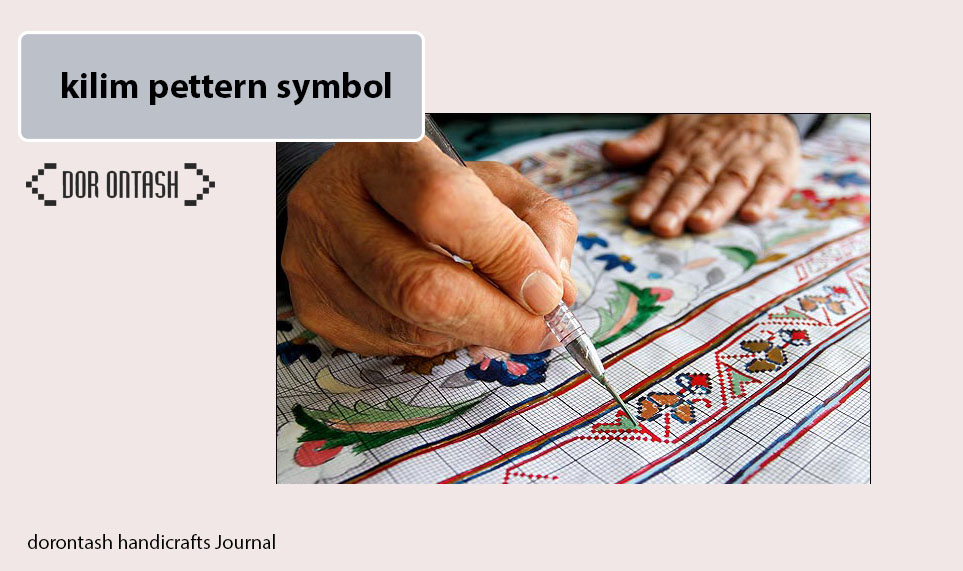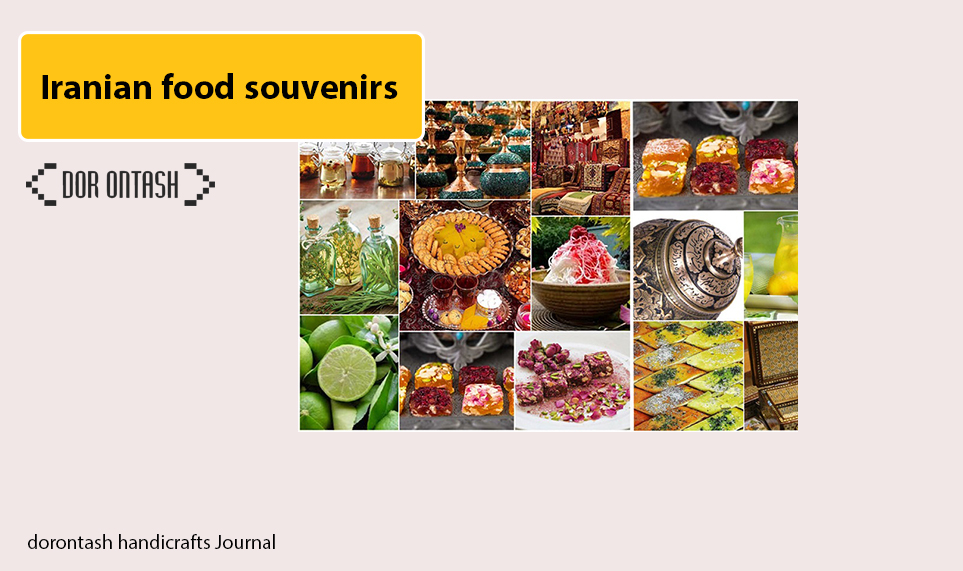The art of painting like iran miniature art originates from concepts such as the exaltation of the soul, reaching the world of meaning, sacred art and other similar concepts, in which, in addition to the outward and material forms, one must also understand the spiritual and spiritual world hidden behind it.
The art of painting or miniature is an authentic Iranian art that has a deep relationship with the culture and beliefs of the people of Iran, it is a link between thinking and feeling that must be deeply understood to realize its wonders. Miniature patterns represent beliefs, worldview and lifestyle in a pictorial way that has gained a new character with the influence of Islamic art.

In this art, a world superior to the material world of the earth is imprinted in the artist’s mind; In Islamic painting, the artist portrays what he sees on the imaginary screen, and in this way, he creates an Iranian-Islamic work by grasping the divine thread and using Islamic teachings.
Negar in mystical literature | iran miniature art
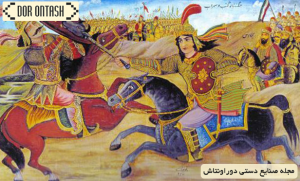
Negar has different and many meanings in mystical and romantic literature, and in the art of painting, God is the real Negar, all eyes are on him, and he also manifests himself in different ways. With this definition, the painter is the imager of the manifestation of the right and sometimes reaches a position that reveals the face of the right. The painter exposes the inner and deep concepts and what is inside and outside nature in a smaller size and in the form of shape, color and space with his creative mind. Painting has a general meaning and includes various methods and styles of Iranian painting, both in books and manuscripts (gilding, poetry, bordering, table drawing, flowers and birds) and on the walls of buildings. Painting, gilding, poetry, and their characters and colors do not need any kind of interpretation or translation; They are easy to understand.
Have you ever been mesmerized by one of the Iranian paintings? Almost all of us have encountered one of these works in our lives. Be it on the inlay box of our grandmother’s house or in the museums that display the painting works of master Kamal al-Molk. In this article from Salam’s collection of art articles, we will examine the magical world of Iranian painting.
In this article, we will first give a brief explanation of what this art is and the beginning of its history; Then we will fully review the painting schools of Iran in historical order. We will talk about the difference between miniature and painting and we will examine the application of this art in daily life and handicrafts of our beloved country. If you are also interested in teaching Iranian painting and simple and preliminary designs of Iranian painting, join us!
What is artistry? And what are its features?
Painting is the art of “writing” and very detailed and beautiful engravings on canvas or practical objects. In this type of painting, the artist tries to move away from conventional realism to depict the world he sees and feels, not the realistic or real idea we have of the scenery around us. iran miniature art
If we want to look a little more closely at the dimensions of this type of painting, we have to go to the comparison tool. In realist paintings, the artist tries to reflect exactly what he sees outside himself, like a photographic camera, on his canvas. Therefore, the rules of perspective (depth of view) are well observed in it. For example, trees that are further away appear smaller. But in the art of Iranian painting, the creative artist violates these rules and disrupts the rules of “distance and closeness”.
In addition, in this art, there are very powerful drawing or drawing. That is, the painter does not try to induce an “illusion of reality and dimension” with the light shadow technique. The themes used in this art are also very close to Iranian culture. The depiction of Bazm and Razm gatherings in famous Iranian books is a very good example of the use of Iranian motifs in this art.
The lines used in Iranian painting mostly have curves. Of course, in the following and when we talked about the different schools of this art in Iran, we will talk more about the differences in the use of calligraphy in different periods. In addition, bright colors are used in this art and the space has a light and holy state. The Iranian painter tries to show the objects from the best angle and to induce an idealistic idea of the objects and the environment.
Terminology of Iranian painting from Wikipedia
Word writing is equal to writing, drawing, painting and painting. Iranian word painting refers to several ways of Iranian painting in different historical periods, which can be related to a larger work of art such as books, practical and cosmetic things, and can be done with several methods such as flowers and birds, gilding, poetry, or as a separate work such as A curtain, canvas, patchwork or wall painting should be done. . From a lexical point of view, miniature is a French word that was used to refer to delicate and small-sized handicrafts in the Middle Ages. Originally, the word miniature is derived from the Latin word miniare, which is a kind of pigment, and thus miniature means “writing in minium”. Accordingly, in the Middle Ages, calligraphers who used this oxide were called miniature in Latin. (Minium is a lead oxide that was used as a reddish pigment to trace letters on manuscripts.).
Miniature or art painting?
Saying the word “miniature” to ancient Iranian paintings is inadequate and misleading. . The word “miniature” is shortened from the French word “minimum natural” and equal to the small world, and in the word equal to show smaller. At the beginning of the last century, this word was introduced into the study culture of Iranian art, and then it became widely used. The term “miniature” is not only applied to Iranian painting, but also to any small and delicate work of art that has these characteristics.
Iranian painting, both old and new, which does not follow the European style and has the characteristics of old and separate painting, has been called miniature. In fact, this word is a widely used slur, and the appropriate word for this field should be called painting. He said: Although Iranian paintings are similar to medieval miniatures in terms of size and miniatures, these two are not related to each other in terms of meaning and even visual quality.
iran miniature art on pottery
The art of painting on pottery handicrafts was revived by the researchers of the Pottery and Glaze Workshop of the “Traditional” National Arts Research Institute, Cultural Heritage and Tourism Research Institute.
According to the public relations report of the Cultural Heritage and Tourism Institute, Rana Bahrami, a researcher at the Pottery and Glaze Workshop of the National Arts Research Institute, stated that there have been examples of painting on pottery with human motifs since the 4th and 5th centuries during the Seljuk period.
According to him, examples of these illustrations can be seen in dishes that are engraved with human faces and Mongolian icons.
This researcher added: Painting on dishes has been done for years, but in recent years, it is mostly used to illustrate books or in the form of miniatures on paper.
He announced that one of the goals of the pottery and glaze workshop of the National Arts Research Institute is to revive motifs taken from the traditional painting culture of Iran on pottery that is done with the glaze method.
Other features of iran miniature art
- Alfat with Iranian mysticism and wisdom
- Selecting topics from epics and lyrical stories of national culture
- Symbolism and the use of allegorical Iranian motifs
- Spiritual creation
- Depicting the human figure from the front and animals from the profile
- The presence of man and his influence on his surroundings
- For centuries, miniatures (small paintings) in Iran followed a general trend and framework, and based on the general rules that the painters of each region followed, they were known as the schools of that region, for example, the works of the schools of Herat, Baghdad, Shiraz, He mentioned Khorasan, Isfahan, Qazvin, Behbahan, Tabriz, etc.
The first images obtained from this type of painting are leaves from the Arjang book illustrated by Mani, which continued with a calm process and only differences in execution until the time of Kamaluddin Behzad. Of course, for experts, the differences are identifiable and obvious, but for the general audience, these types of paintings differ only in their subjects, such as being epic, courtly, lyrical, or religious.
Kamaluddin Behzad iran miniature art
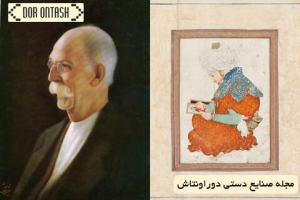
-
Undoubtedly, Kamaluddin Behzad was one of the bold artists of his time. He was born around 1455 AD in Herat.
As a child, Behzad was trained under the supervision of the painter Mirek and was able to become the painter of the library of Sultan Hossein Bayqara. After the conquest of Herat by Shah Ismail Safavid, Behzad was transferred to Tabriz and worked in the Safavid court. What Behzad paid attention to in his works, which was not seen in Iranian paintings before him, was dealing with the subjects of street and bazaar people, the most famous of which is the painting “Building Khornaq Palace”. Behzad took another action in this work, which can be seen in the works of artists such as Reza Abbasi. This action was the precision in depicting body movements and proportions, which was not seen in miniatures before him. In his works, the attempt to use perspective and light shadow can be seen, of course, in a limited and imperceptible way, which can be seen as a movement towards realism.
The most important event in this historical time, across the borders, happened in Italy and that the Renaissance was born in Europe, Europe left behind the depictions of the Middle Ages and entered the space of large-scale wall and panel paintings. Therefore, with the presence of Kamal al-Din Behzad in the two courts of the Timurids (Herat School) and the Safavids (Tabriz School), we can see the change of paintings before and after him and the formation of new painting in Iran from the previous miniatures, which became known as the Behzad School.
He in 1535. He died in Herat and was buried near the shrine of Sayyid Abdullah Mukhtar.
After Behzad, Reza Abbasi became the most disruptive artist of his period, he broke all the previous traditions common in the schools of Tabriz and Herat and created works that later found his followers, which became known as the “Reza Abbasi” school. Abbasi’s greatest act in painting was the use of single figures on paper, which was rarely discussed before. Considering that Europeans visited Iran in the 11th century AH and western works entered the country, Reza Abbasi did not engage in shading and western perspective in his paintings, but used a pen to draw lines with different thicknesses. He shows full attention to nature in his works. In the works of Reza Abbasi, we are less faced with the multitude of figures, and the emotional states of people in his paintings are a point worth pondering. He passed away in 1044 AH (1635 AD). After Abbasi, Afzal al-Husseini, Muhammad Qasim, Yusuf and Muhammad Ali followed his style.
Mohammad Zaman bin Haji Yusuf Qomi
-
Following the change of Iranian miniature to modern painting, Mohammad Zaman bin Haji Yusuf Qomi has been one of the most influential artists. He was active in the years 1650 to 1694 or until 1701 AD. Due to his free copies of Western paintings, Mohammad Zaman played a significant role in promoting the foreignization of Iranian painting, that is, the use of perspective and shading in his works. According to researchers, he was the first Iranian painter who used oil on canvas.
In the 12th century of Hijri, the process of Frenchization in Iranian painting progressed slowly, but the quality of the paintings also decreased. In the court, the style of miniatures was preserved with minor changes, and in the bazaar, single figures of women, couples in love, assemblies of love poems and Christian narratives found their fans. During the reign of Zandiyeh, Iranian painting moved towards the space that we call Qajar painting today. Fat women with round faces and big eyes, men with round faces without beards and thin hair, women with thin shirts, loose pants and long, button-down vests, and men with tight-fitting fronts on their bodies and shawls on their waists and long turbans or leather hats. or a head covering similar to a women’s cap on the head is one of the distinctive features of this period.
But the most interesting thing in the Iranian painting scene is the formation of lacquer painting (watercolor painting on glued layers of paper, board or paper pulp and covered with successive layers of transparent polish). The decoration of objects such as pencil cases, mirror frames, book covers, jewelry boxes and trays was also very fashionable.
During the Qajar period, what we used to know as Iranian painting was less visible. The combination of traditional and western atmosphere created the Qajar school of painting. Mural painting started in this period and changes in dimensions can be seen in the works. Before this, paintings were drawn on paper pages to illustrate books, but in this period, we are facing large-scale works. Paintings were installed on large screens and prints on the walls. Painting on canvas, fashion and portrait fans are on the rise. Flower and chicken making has also become common in this period, whose roots go back to the Seljuk and Safavid periods. Of course, flowers and chickens are one of the branches of Iranian painting in the last two centuries.
Previously, in Iranian painting, the upper and inner world, timelessness, flat colors, circular and spiral compositions, etc. (in the whole spiritual space) were prominent. But the paintings of the Qajar period focused on the external environment, Renaissance compositions, perspective, light shadow, etc. (material paintings). Of course, one of the most important things that affected the traditional painting of Iran and caused its general change was the introduction of the photographic camera to Iran during the time of Naser al-Din Shah Qajar. The printing industry also became popular and book illustration flourished again. Lithograph also found something to say.
Painters such as Abul Hasan Khan Ghafari known as Sani al-Mulk, Muhammad Ghafari known as Kamal al-Mulk and Mahmoud Khan Malik al-Shaara (Saba) worked in this period.
Sani al-Mulk illustrated the book of One Thousand and One Nights using lithography. Kamal al-Mulk introduced the western classical style to Iranian painting. Saba was a popular and tender painting that created a work between the traditional Qajar atmosphere and the classical Kamal al-Mulki. Also, iconography of imams and imams became popular, which resulted in painting behind glass and a coffee house school, and today it is known as Saqaqhana. Face painting and dealing with details and character description were of primary importance.
But what we know as new painting was created by Hadi Tajvidi. He in 1272 AH. Sh. He was born in Isfahan, and by founding “Miniature School of Tehran” he created a link between traditional painting art and today’s generation. In addition to learning painting from Haj Mirza Emami, he learned Western classical style from Kamal al-Mulk. Tajweed painted mostly national subjects. He became a master in watercolor painting. He was the first teacher of miniatures in the new style in the school of old crafts “High School of Arts and Arts of Iran”. By adding bright shadows to the faces of his pictures and using perspective, Tajweed caused a revolution in painting. He completely modernized the faces in his paintings, that’s why there are no duplicate faces in Tajweed paintings. In Europe, his works are known as Hadi. Tajweed in 1318 AH. Sh. passed away
Hossein Behzad also made a lot of efforts to Iranianize painting. to the year 1273 AH. She was born. He brought painting to its peak. He completely changed the common way of Mongolian images in Iranian miniatures, which were all similar to each other, and introduced Iranian shapes into his works.
He avoided the details in the previous miniatures and depicted moods and moods in his paintings. He used bright shadows in painting. He broke the small dimensions of miniatures and presented paintings in large dimensions. Behzad returned painting to its path and removed the influence of Russian and foreign works from Iranian painting. During his trip to Paris, he examined the works of Iranian miniatures in the Louvre Museum. Behzad said about the search in Iranian and foreign paintings: “My study in different styles of Iranian and foreign paintings was for the purpose of creating a style that is Iranian and at the same time adapts to today’s art. The miniature painting style, which had become a false and disgusting imitation, was gradually disappearing, I was trying to create a style so that this national art would not be forgotten. »
He was buried in Ibn Baboyeh, Ray city.
Mahmoud Farshchian is another painter who had a deep impact on Iranian painting, he was born in 1308 AH. Sh. He was born in Isfahan. He studied under Haj Mirza Agha Emami. He went to Europe and studied Western works. He established his own style by adhering to the classic atmosphere and using modern techniques. His works are a combination of tradition and modernism and played an important role in introducing Iranian painting to the world.
The most important feature of Farshchian’s works is the power of the pen and the firmness of the pen lines in his works, which has made him famous. Curved and rotating lines are more visible in his works, because Farshchian himself says about this: “The whole existence is moving on a circular path. Is. In the right line, I see a frankness that is not present in our daily life, a frankness that if there was, there would be no more evil and all of life would be good.”
Farshchian and art painter
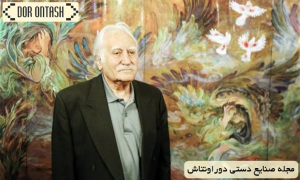
-
Farshchian turned a new leaf in Iranian painting. His works were created with a completely different atmosphere than what existed before in the miniatures of the Ilkhanid, Timurian and Safavid periods. Currently Farshchian lives in America and travels to Iran several times a year.
Now in 2013 AH. Sh. The status of painting among the artists of the third and fourth generation of modern art is not the same as it is among contemporary masters such as Farshchian, Majid Mehrgan, etc. These days, young and avant-garde artists use Iranian miniatures and paintings in a postmodern atmosphere. They use paintings in a completely integrated way with the styles of neo-expressionism and pop art and create surreal images from it, which are known as “nostalgia of today, a memory of yesterday”, which are also engraved on the walls of galleries. This space has quickly become popular in the Persian Gulf countries and the works of these artists have entered foreign exhibitions. Iranian painting
What was once remembered by Mani as Iranian painting and art and has been subjected to ups and downs and experiences of artists over the centuries, today it still firmly maintains its position with changes in shape and form and is certainly unaffected in Visual arts will not be the future of this land.

